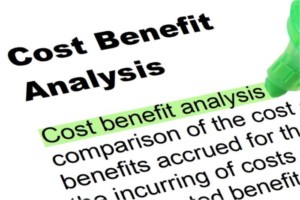How To Determine If The PM Activity Being Performed Is Worth Doing
 Would you spend $100 every week to prevent a possible issue that will result in a loss of $10? Probably not, so why is that we do that with our maintenance programs every single day? Often, PM and PdM activities are put into place without any thought to the economic impact of the activity. While in theory the PM or PdM activities will prevent or mitigate the consequences of the failure, is implementing one of these activities the right thing to do?
Would you spend $100 every week to prevent a possible issue that will result in a loss of $10? Probably not, so why is that we do that with our maintenance programs every single day? Often, PM and PdM activities are put into place without any thought to the economic impact of the activity. While in theory the PM or PdM activities will prevent or mitigate the consequences of the failure, is implementing one of these activities the right thing to do?
Any organization involved in manufacturing is in business for the economic upside, and as such the PM and PdM activities need to provide a positive economic return to be worth doing. If the PM or PdM activities are not worth doing, they impact the profitability of the organization.
So how does an organization evaluate if a PM or PdM is worth doing? This analysis can become complicated and complex involving statistics (I know, statistics can be scary), but even a simple analysis can provide some guidance when determining whether or not a maintenance activity is worth doing. While not the most complex approach, the method outlined below can provide some simple insights.
Assumptions
To perform an analysis to determine if the maintenance activity is worth doing, there are some basic assumptions made;
- In the case of a PM activity, the activity restores the equipment to As Good As New (AGAN) condition
- In the case of a PdM, the activities verify that the equipment will operate without failure until the next maintenance activity
- The PM or PdM activity is linked to a specific failure mode and is appropriate for the failure mode identified.
- The timeframe of evaluation is a defined period (i.e. one year)
- The failure does not have a Health & Safety or Environmental consequence and has an operational or non-operation consequence only.
If these assumptions hold true, then an analysis of whether the maintenance activity is worth doing can proceed.
Calculating the Cost of the Maintenance Activity
The first step is to determine the cost of the maintenance activity. This is simply the cost to perform the maintenance activity, and requires the following data points;
- Frequency of maintenance activity: Every 3 Months
- Time to complete the maintenance activity: 1 hour
- Cost of planned downtime per hour: $100
- Cost of parts / consumables: $20
- Wage per manhour: $35
- Total man-hours to complete the activity: 2 manhours
Once the data points have been determined, the cost to complete the maintenance activity can be determined;
- Cost = (Time to complete x Cost of planned downtime + Cost of parts & consumables + Wage per manhour x Total man-hours) x number of occurrence over defined timeframe
- Cost = (1 hour x $100 + $20 + $35 x 2) x 4
- Cost = ($100 + $20 + $70) x 4
- Cost = $190 x 4
- Cost = $760
Therefore we can see that the cost to perform this specific maintenance activity is $760 per year.
Calculating the Cost of a Failure
The second step is to determine the cost of failure(s) experienced if the Maintenance was not performed. This is why it is so important to ensure the maintenance activity is linked to a specific failure mode. To determine the cost of a failure, the following is required;
- Duration of unplanned downtime: 2 hours
- Cost of unplanned downtime: $400
- Total man-hours to repair: 4 hours
- Wage per manhour: $35
- Cost of repair parts: $200
- Estimated number of failure (in the defined period): 2
- Cost of induced failures: $1000
The cost of induced failures is the cost of any secondary failures that would result from the initial failure. Once the data points have been determined, the cost of the failure can be determined;
- Failure cost = (Duration x Cost of unplanned downtime + Manhours to repair x Wage + Cost of repair parts + cost of induced failures) x number of failures
- Failure cost = (2 hours x $400 + 4 man hours x $35 + $200 + $1000) x 2
- Failure cost = ($800 + $140 + $200 + $1000) x 2
- Failure cost = $2140 x 2
- Failure cost = $4280
Therefore the cost of failures over the course of a year is $4280 for this specific failure mode.
Determine if the Maintenance Activity is Worth Doing
With these two costs determined, a simple ratio can be used to determine if the maintenance activity is worth doing, a simple ration can be used;
- PM Cost Benefit ratio = Cost of failure / Cost of maintenance
- PM Cost Benefit ratio = $4280 / $760
- PM Cost Benefit ratio = 5.63
Since the cost benefit ratio is above 1, it indicates that there is a benefit to the organization to perform the maintenance activity instead of running to failure. Typically, organizations will establish a minimum threshold for maintenance activities such as 1.5 or 2.0. This ensures that all maintenance activities have a positive benefit.
However, there is an exception (and there always is). If the Cost Benefit ratio is less than 1, but the failure mode is related to a significant risk related to Health & Safety or Environmental, then the maintenance activity will have to continue. The same goes if the activity is based on a regulatory requirement.
By quantifying the cost benefit of any maintenance activity, the maintenance program will contribute to the profitability of the organization. Another side benefit of using this type of cost-benefit analysis is that it will prevent unnecessary PMs from being put into the CMMS as a knee jerk reaction.
Does your organization have a cost benefit analysis for PMs or PdMs? If so, how much has your organization benefited from it?
Remember, to find success; you must first solve the problem, then achieve the implementation of the solution, and finally sustain winning results.
I’m James Kovacevic
Eruditio, LLC
Where Education Meets Application
Follow @EruditioLLC
References:
[/fusion_builder_column][/fusion_builder_row][/fusion_builder_container]
